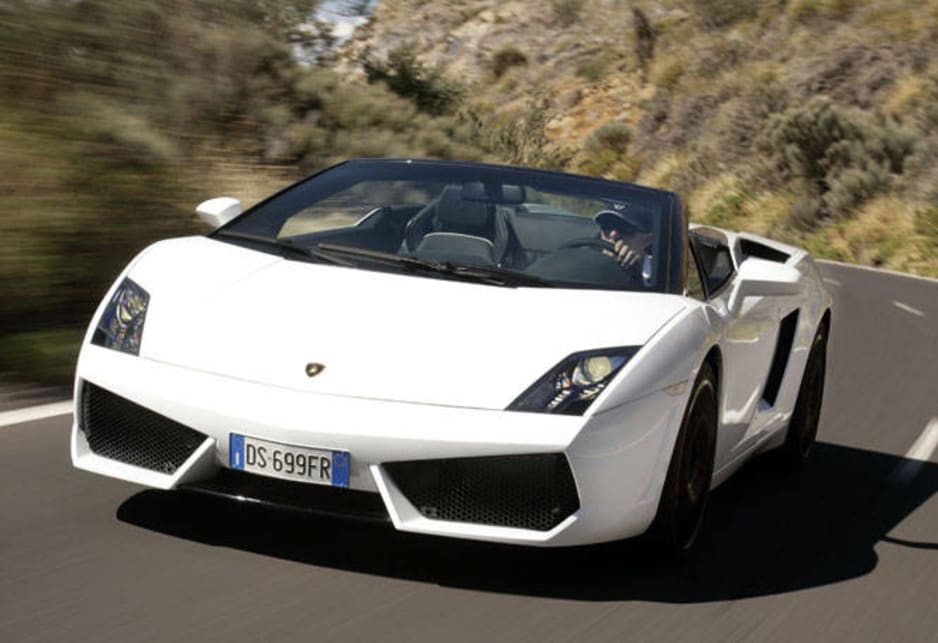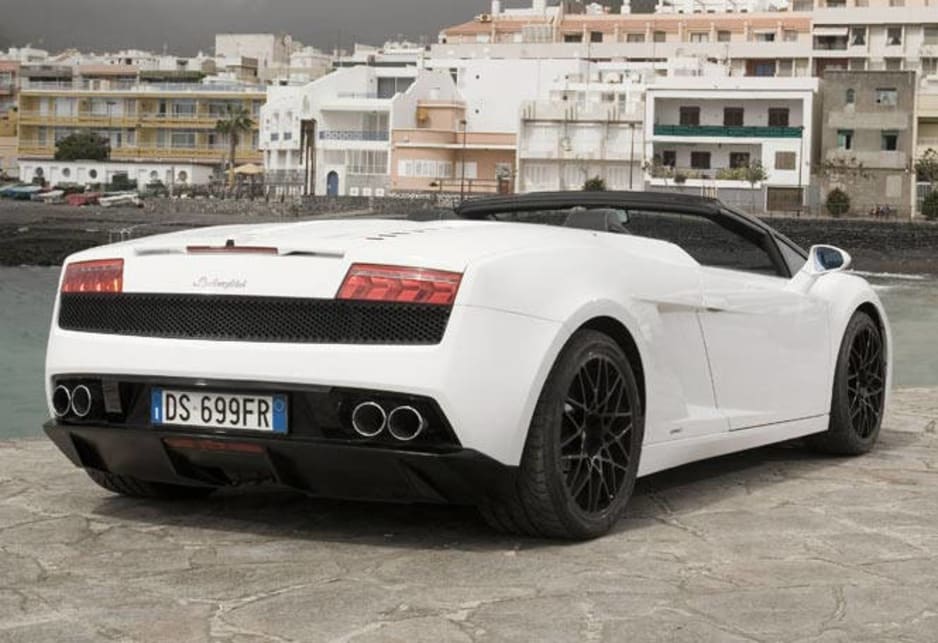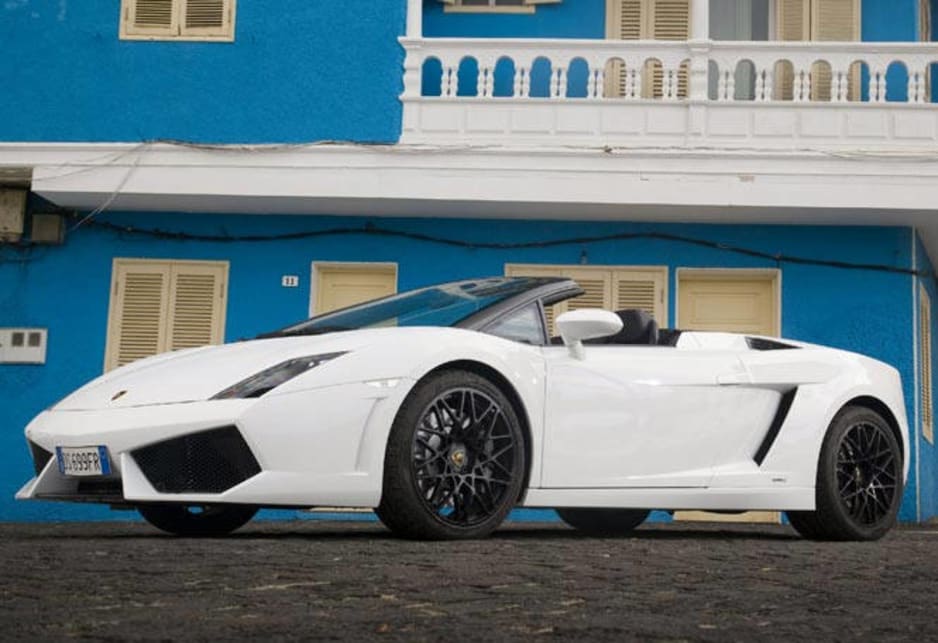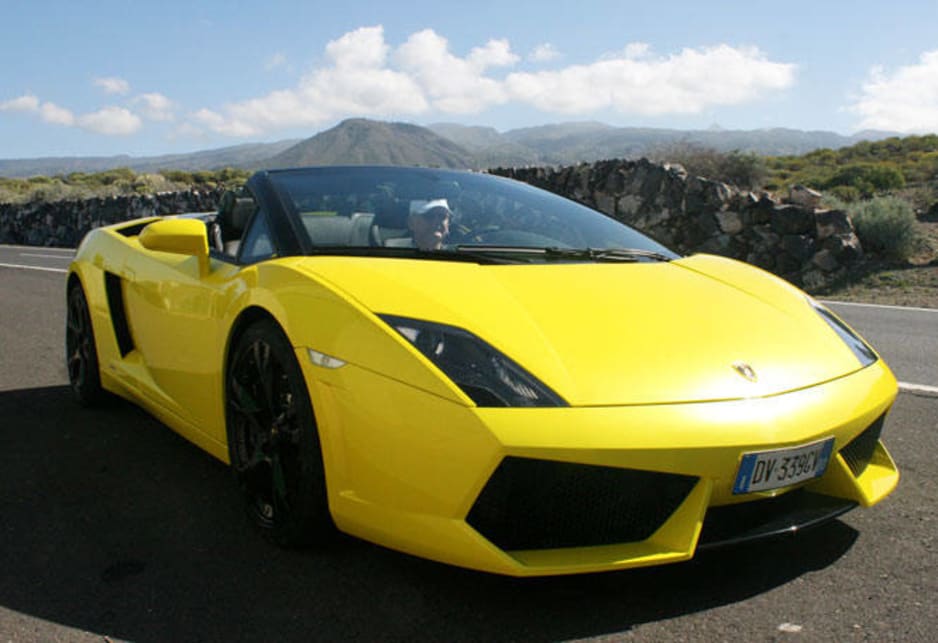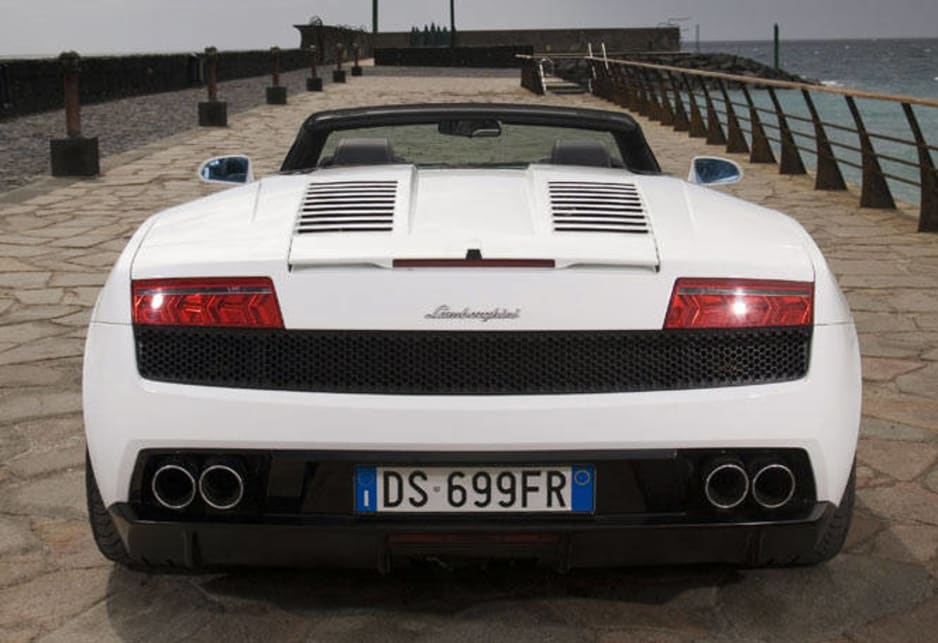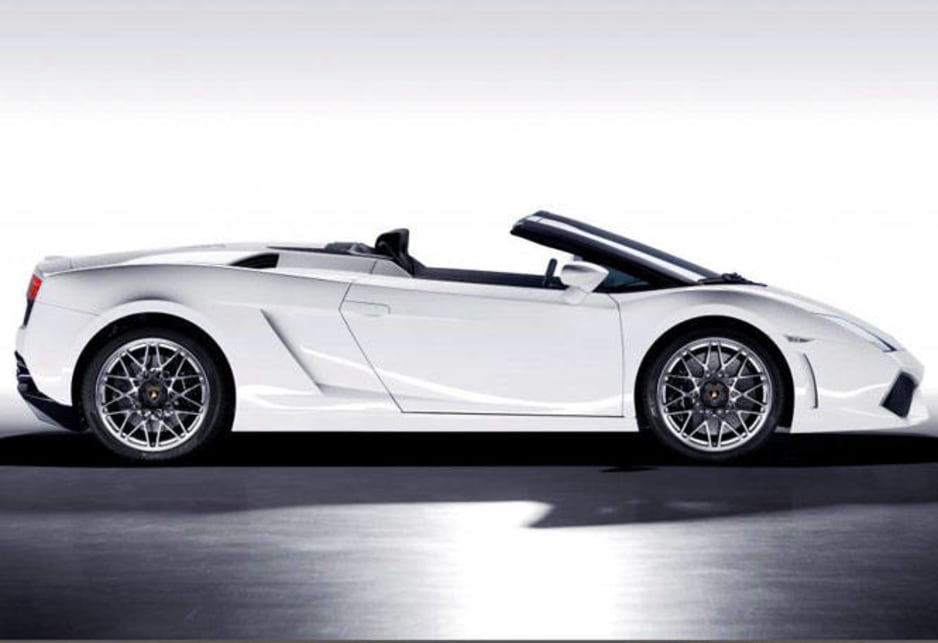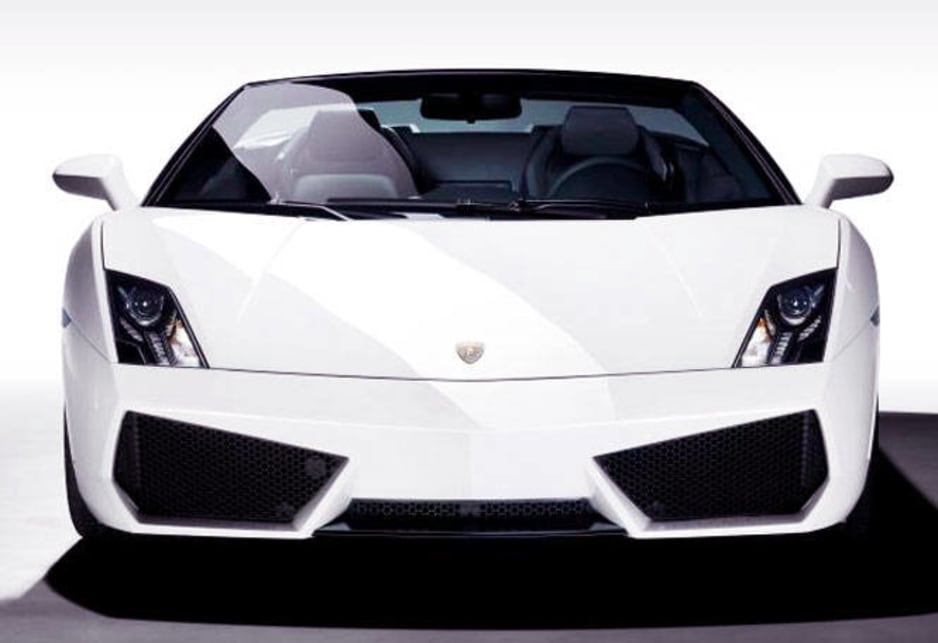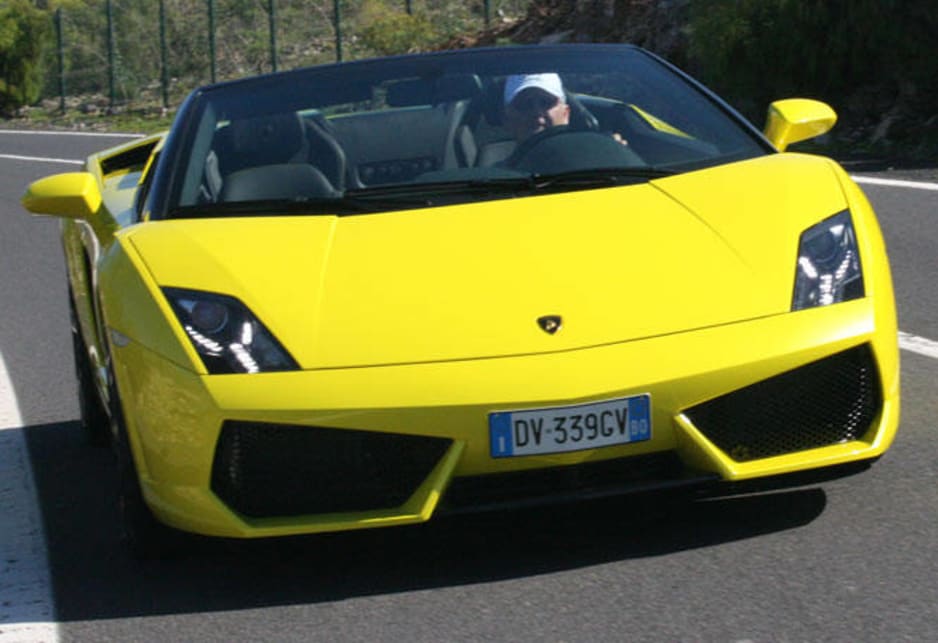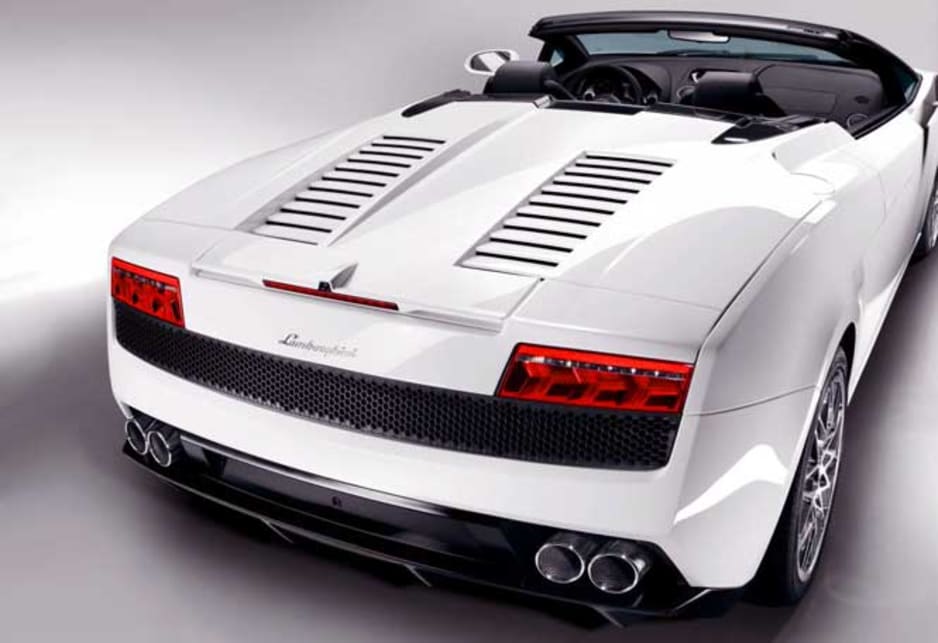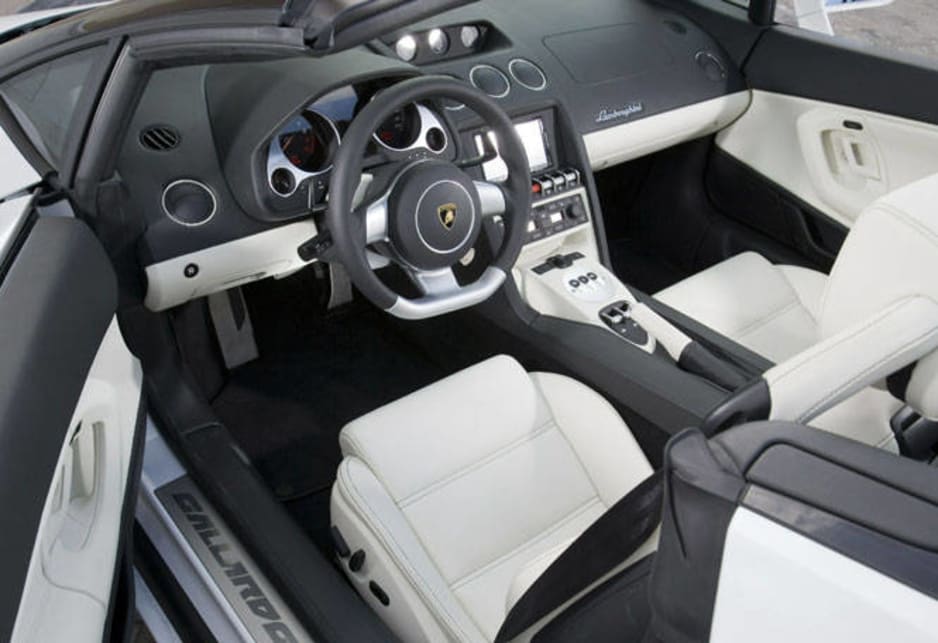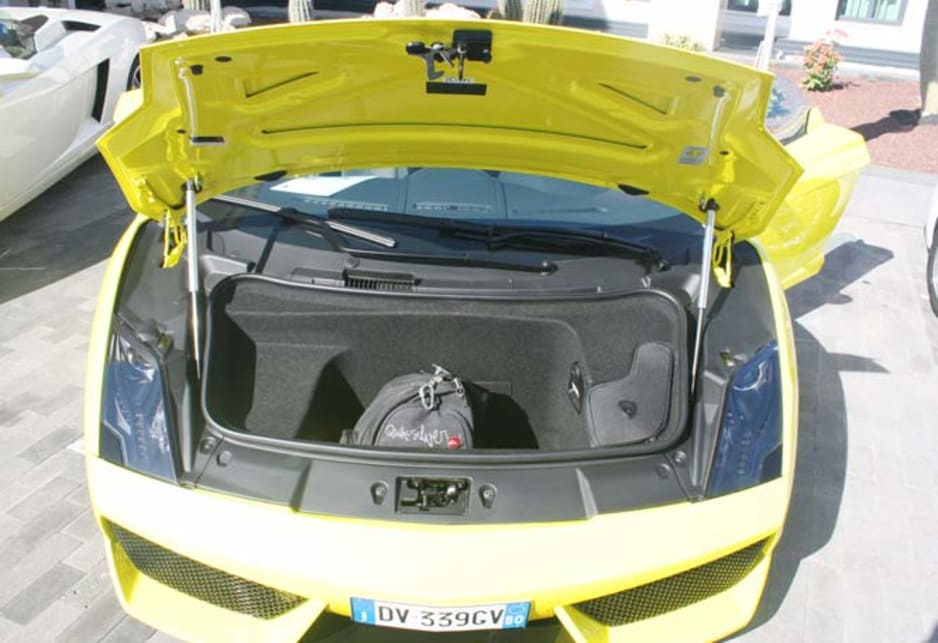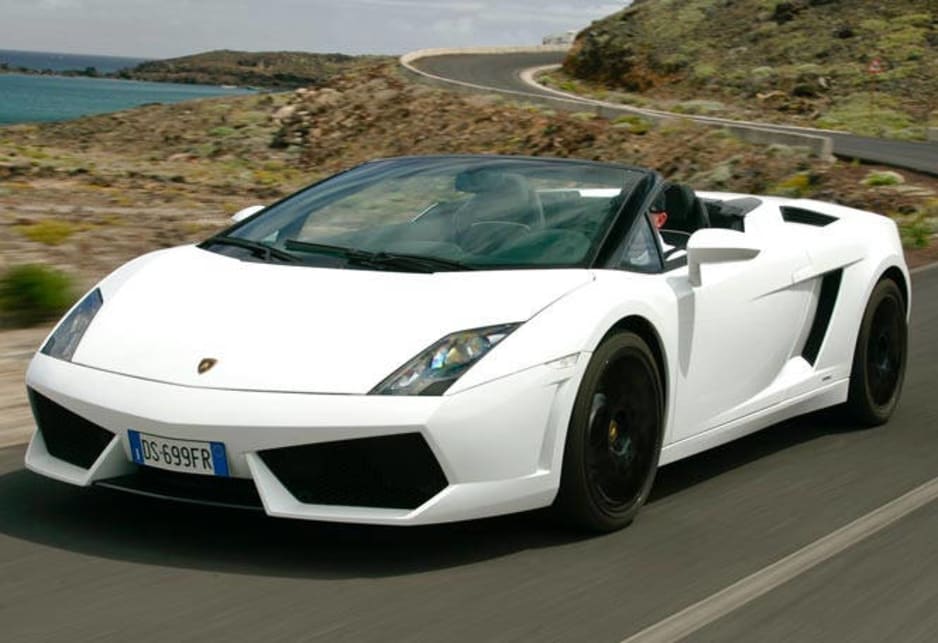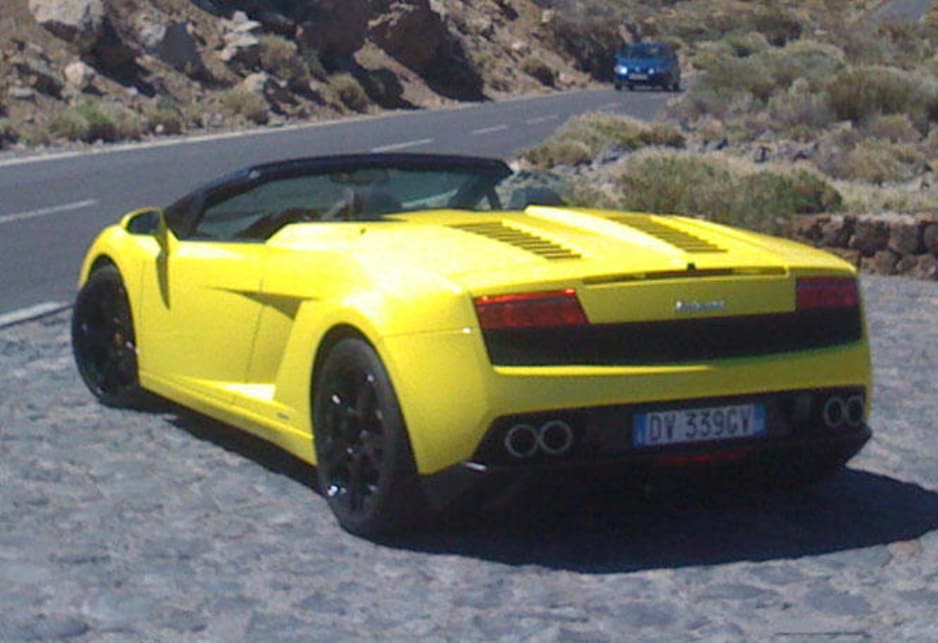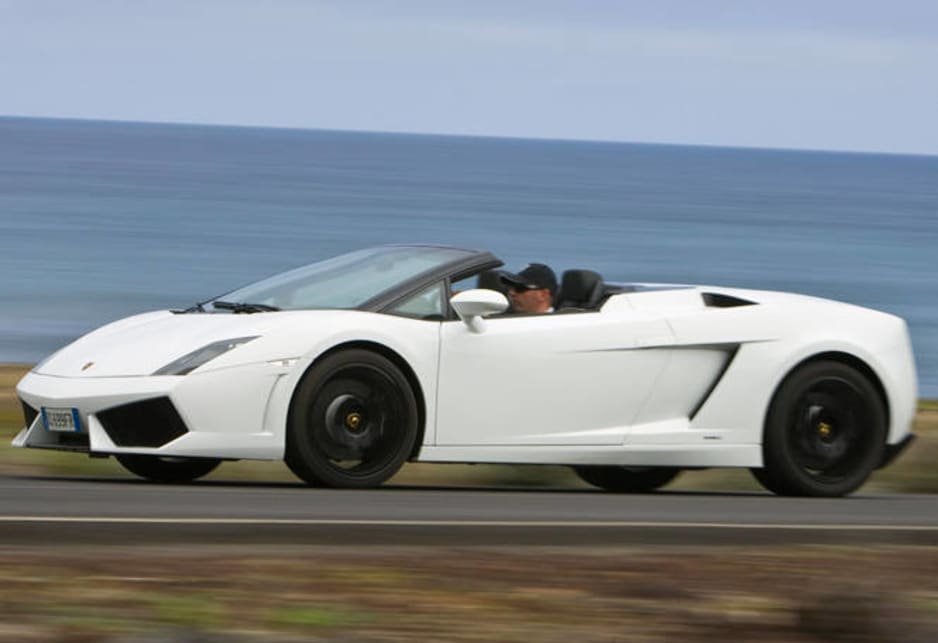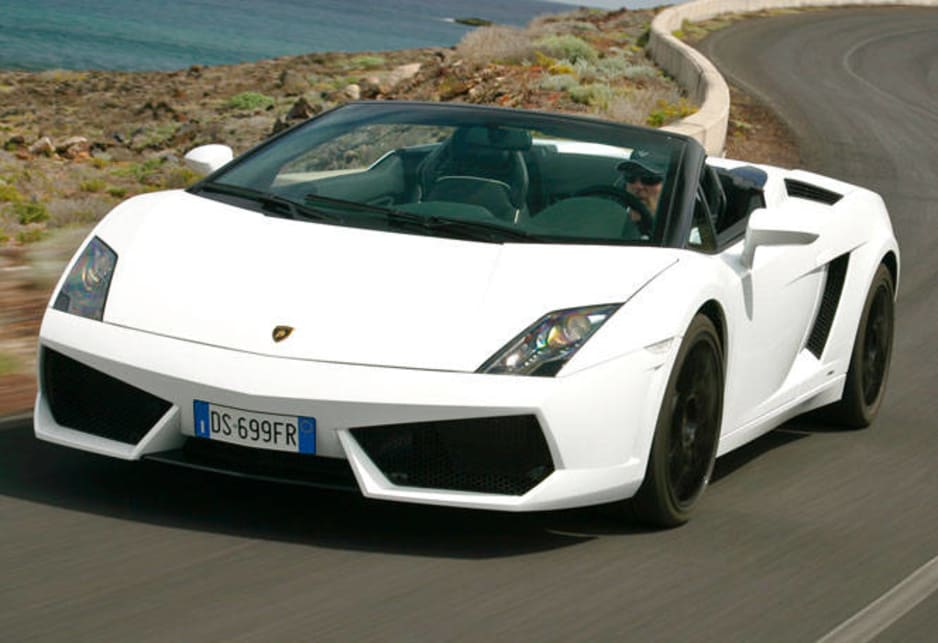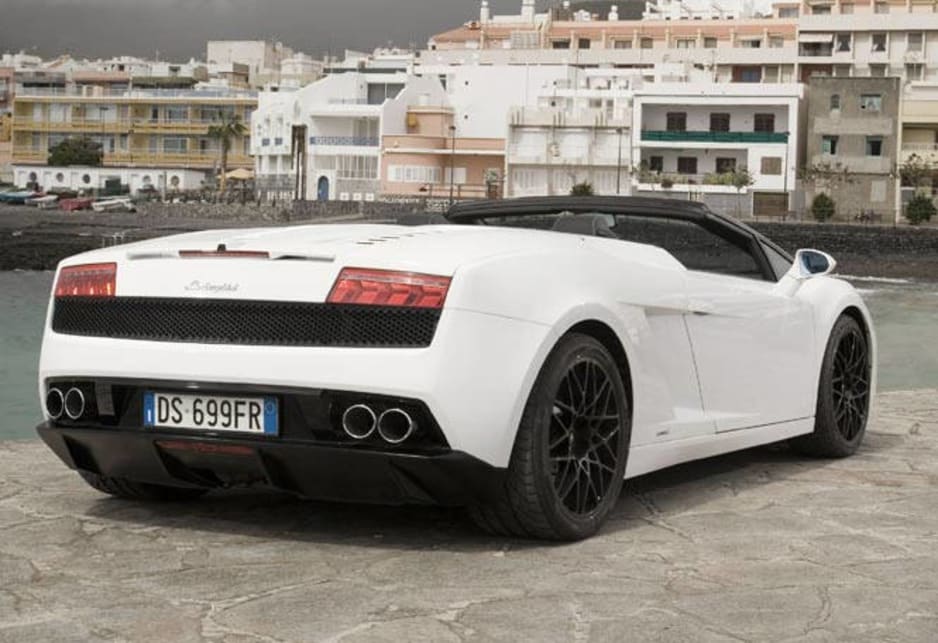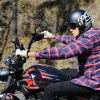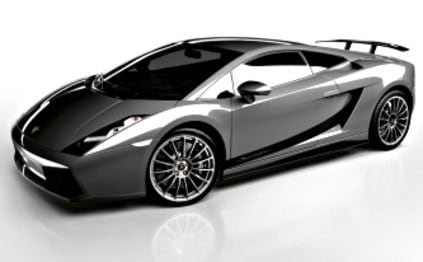
Lamborghini Gallardo 2009 Review
- Lamborghini Gallardo
- Lamborghini Gallardo 2009
- Lamborghini Gallardo Reviews
- Lamborghini Reviews
- Lamborghini Convertible Range
- Lamborghini Coupe Range
- Convertible
- Coupe
- Lamborghini
- Prestige & Luxury Cars
- Sports cars
- Motorsports
- European
This is the Italian manufacturer’s best-selling car in full-thrust mode at its international launch on the volcanic Spanish island of Tenerife off the coast of Morocco last week.
The locals don't get to see a lot of super sportscars on the tiny tourist island, so the appearance of the Gallardo Spyder, named like all Lambos after a famous Spanish fighting bull, elicits cries of Dale cana which means step on it.
We oblige and the Spyder rockets to 100km/h in just four seconds, down an imperceptible 0.34 seconds on the previous model.
The convertible will arrive in Australia in July costing $502,000, which is $47,000 more than the coupe.
For that you get a powered soft top in black, blue, grey or beige that goes up or down in about 20 seconds, allowing the driver and passenger to more fully appreciate the unique wail of the 5.2-litre V10 engine it shares with the coupe.
The new driveline, featuring Iniezione Diretta Stratificata direct fuel injection, reduces fuel consumption with CO2 emissions down 18 per cent, but still an unhealthy 330g/km.
Power is up 29 kilowatts to 412kW or 560 horsepower, hence the models name, while weight is down 20kg.
Automobili Lamborghini: research and development director Maurizio Reggiani says this improves the all-important power-to-weight ratio.
"The key ingredients of this car are four-wheel-drive traction, a low power-to-weight ratio and its easy to drive with energy efficiency," he says.
Brand director Manfred Fitzgerald says it is an "extreme car" with an "extreme set-up" and is not a daily driver.
Company president and CEO Stephan Winkelmann disagrees.
"This is a daily driver even though our customers dont buy it for an everyday car," he says.
They are both right to some degree.
Driving
Around the narrow town streets, the Spyder feels too wide yet ambles along nicely in full automatic transmission mode.
On downshifts it blips the throttle giving the impression of a talented driver behind the wheel and exciting the excitable locals with its throaty F1 growl.
The suspensions extreme set-up requires judicious approaches to traffic calming so we set the optional front axle suspension lift system to the highest setting.
This only works up to 70km/h, as we soon find out on the steep and twisty hillclimb to the 3000m crater of El Teide, the volcano which dominates the island of Tenerife.
With the top down, I begin to get an ice-cream headache from the cold and dizzying heights as we hurtle upwards on the billiard-table smooth road surface.
Suddenly the road resurfacing funding runs out and it becomes bumpy. The extremely low front spoiler immediately bottoms out with a sickening scrape, leaving a nasty gash, and we back right off.
This may be an easy-to-drive supercar, but its extreme set-up takes it out of the realms of a daily driver.
Like the coupe, the convertible features 4WD with a 30-70 per cent torque split front to rear at constant speed, a mechanical differential on the rear axle which provides up to 45 per cent limited slip, and an electronic differential lock at the front.
All this serves to increase lateral force and provide maximum thrust, Reggiani says.
The hairpin turns on the volcano hillclimb are a perfect testing ground for his claims of lateral force.
The Spyder complies by sticking to the road with neutral manners and almost none of the usual flex and scuttle shake associated with convertibles.
The low-assistance steering provides an almost go-kart feel of direct connection to the front wheels.
True to Lamborghini’s claims, the open cockpit presents little buffeting, even up to 160km/h with the rear glass windscreen and side windows up.
For safety, it features two spring-loaded rollover bars behind the seats which deploy in 250 milliseconds in a roll-over while the seat belt tensioners spring into action.
We avoid testing this function and finally reach the volcanos crater where tourist groups have milled to photograph the stunning moonscape scenery. As we arrive, the lenses are re-focused on the origami-style Spyder instead and the tourists ask us to photograph them standing beside the car.
It is a real head-turner in any colour, but the new and expensive optional matte black, white and brown are the standouts.
On the downhill run the steel Brembo brakes get a solid workout and although there is no hint of fade, the pedal feels a bit soft with a lack of initial bite which is unusual for a supercar.
An obvious drawback for the rear-engined Spyder is the limited 110 litres of front cargo capacity; just enough for one medium-sized suitcase or a couple of back packs.
The hip-high car is also difficult to access and step out of.
I found the cockpit rather cramped for leg space and with the seat all the way back the leather created an annoying squeak against the rear bulkhead.
The sport seats are nicely contoured without being tight, although they are too narrow at the shoulders and are very hard on bony backsides.
Fitzgerald says Spyder customers are 95 per cent male, but more women are attracted to the convertible.
It is also the most important product in their two-car stable.
Murcielago accounts for 25 per cent of sales, while Gallardo accounts for the other 75 per cent with 60 per cent of that being the Spyder.
He says 95 per cent preferred the e.gear auto sequential transmission which features a standard program, a sport mode with shorter shift times and a racetrack-oriented corsa program.
Electronic stability is active in all drive programs, engaging later in the sport and corsa modes and reducing the impact of the traction control. The corsa mode also permits greater drift, however close rock walls on the narrow roads put a stop to any intentions of drifting.
At speeds of more than the sign-posted 120km/h highway, an automatically-deploying rear spoiler increases the down force on the rear wheels.
We flow with the traffic which seems to disregard the posted speed signs and allow the spoiler to work its magic.
The Spyder comes standard with driver, passenger and side air-bags; dual-zone climate control with sun regulator; stereo system with USB interface; sports seats with electrically adjustable back rests; leather upholstery and bi-xenon headlamps with LED daytime running lights.
Options include a navigation system, a hands-free Bluetooth mobile phone connection, anti-theft device, a rear view camera, the front axle lift system, ceramic brakes.
PRICE: $502,000
ENGINE: 5.2-litre, 4-valve V10
POWER: 412kW @ 8000rpm
TORQUE: 540Nm @ 6500rpm
TRANSMISSION: 6 speed manual, or 6-speed sequential e.gear automatic
ECONOMY: 14 litres/100km (combined)
CO2 EMMISSIONS: 330g/km
Pricing guides
Range and Specs
| Vehicle | Specs | Price* | |
|---|---|---|---|
| Superleggera | 5.0L, PULP, 6 SP SEQ | $149,820 – 172,260 | 2009 Lamborghini Gallardo 2009 Superleggera Pricing and Specs |
| Spyder | 5.0L, PULP, 6 SP MAN | $104,940 – 120,560 | 2009 Lamborghini Gallardo 2009 Spyder Pricing and Specs |
| LP560-4 | 5.2L, PULP, 6 SP MAN | $95,040 – 109,230 | 2009 Lamborghini Gallardo 2009 LP560-4 Pricing and Specs |
$95,040
Lowest price, based on third party pricing data


